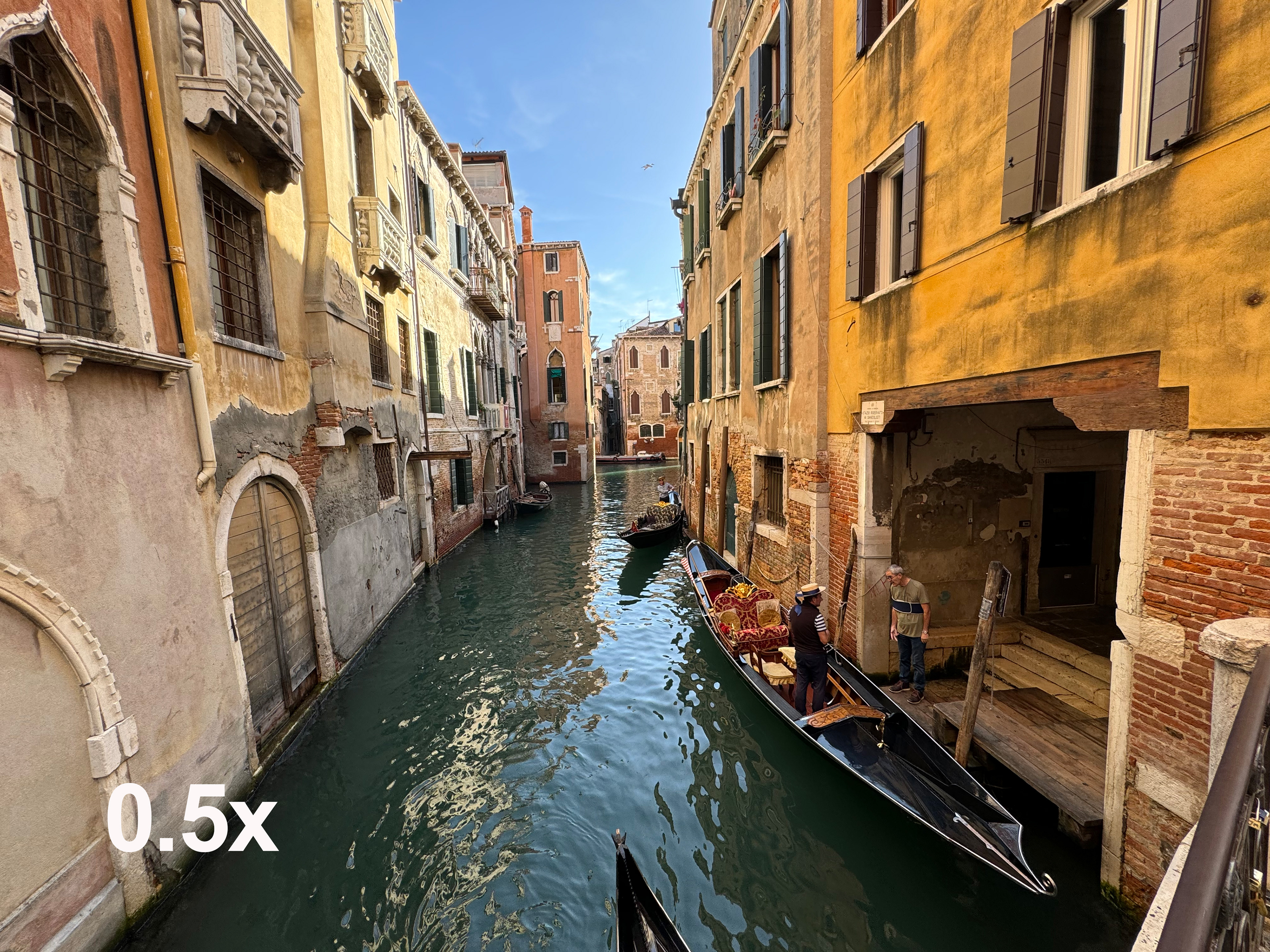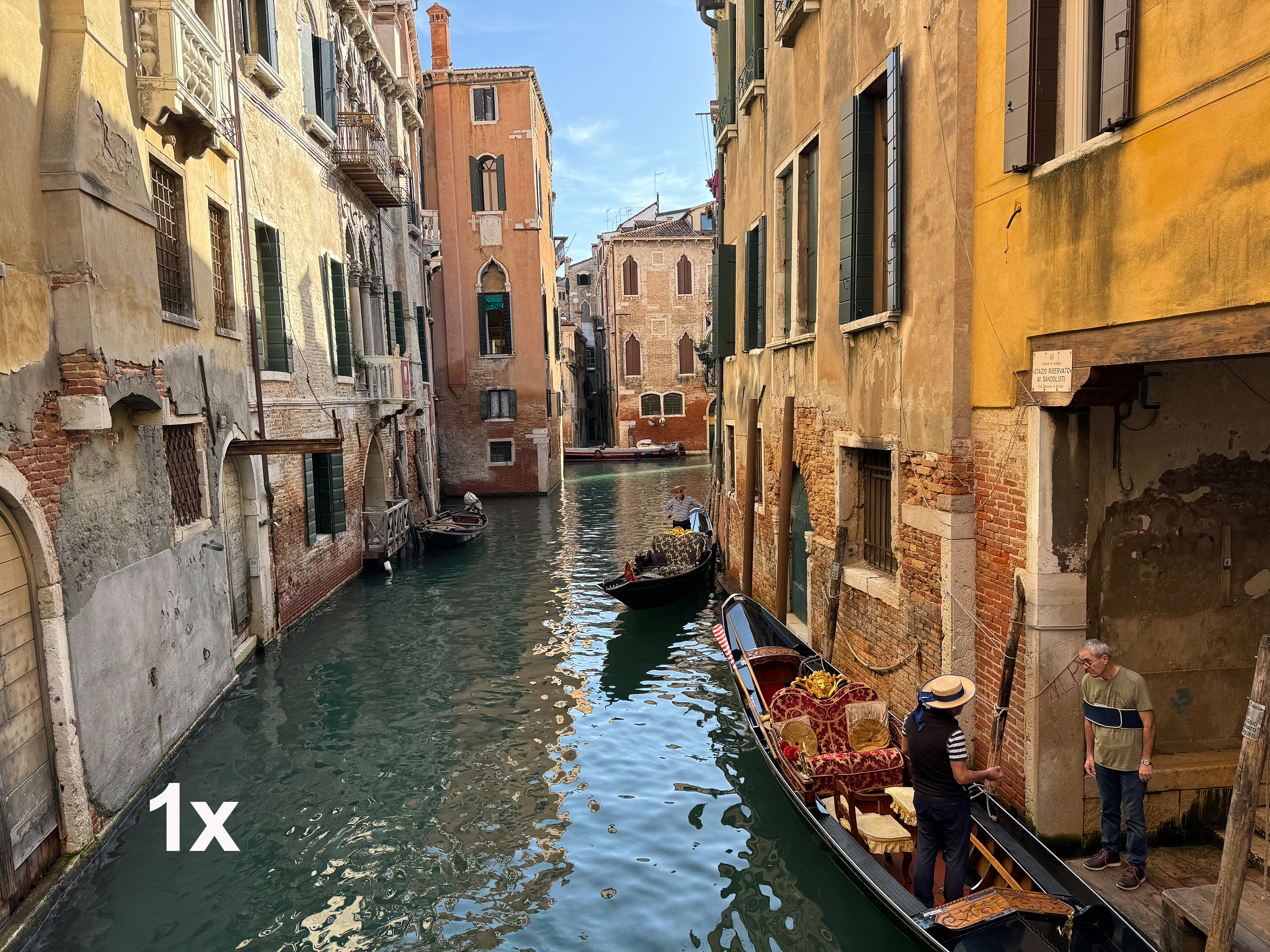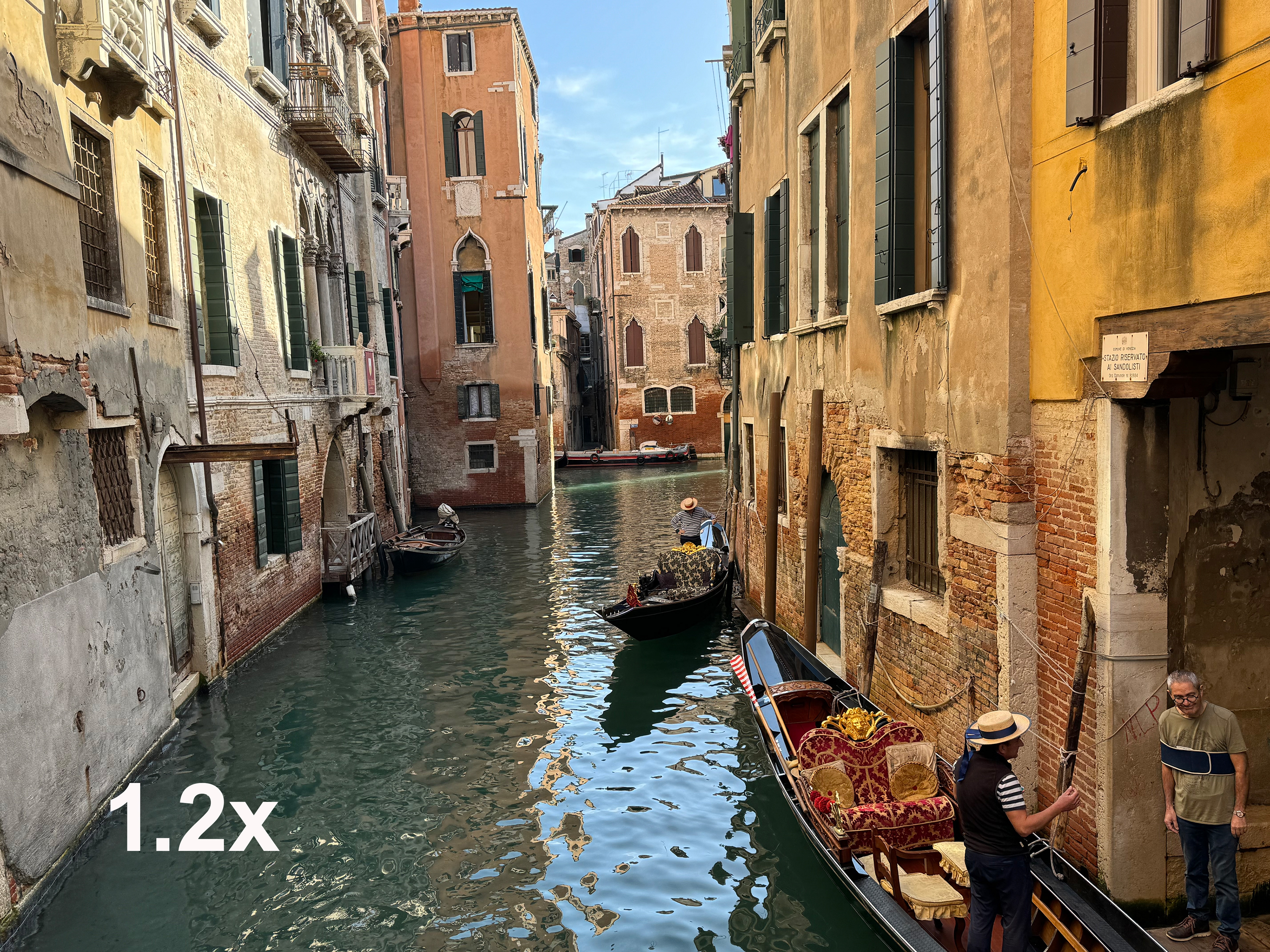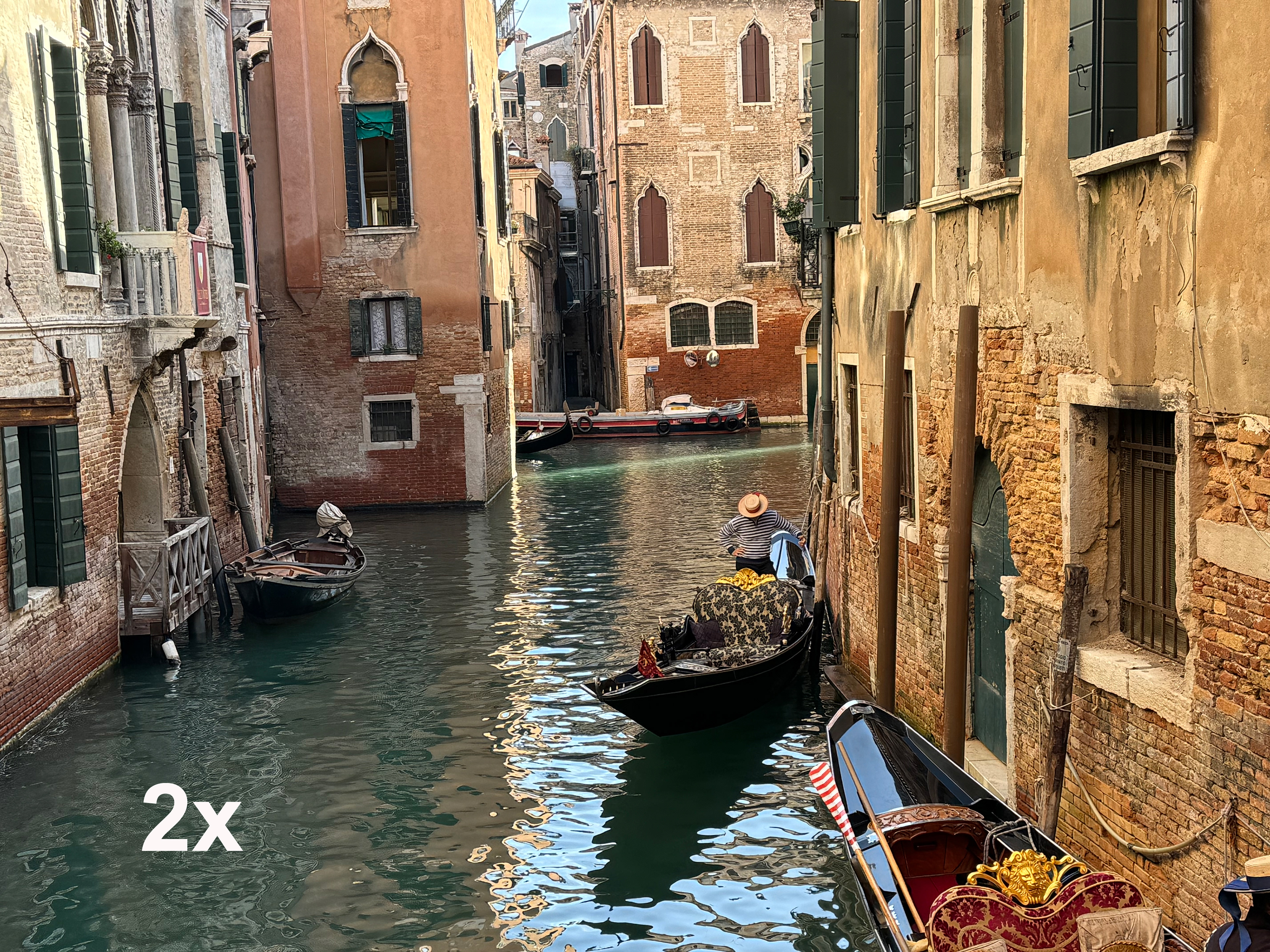Above: The Grand Canal and Rialto Bridge Shot with iPhone 15 Pro Max Main Camera.
Venice, Italy, with its canals and historic charm, is a dream location for photographers. I have photographed here many times, from capturing waterways at dawn to historic landmarks in golden sunlight, and everything in between. I knew there would be plenty of photo opportunities to put my shiny, new iPhone 15 Pro Max through its paces. Apple’s flagship device showcases the pinnacle of iPhone camera technology, with its upgraded 48-megapixel lens, improved Ultra Wide lens, and the most extensive optical zoom ever in an iPhone. I could hardly wait to put it to the test.
As I sit down to express my thoughts, it's only been ten days since I first got my hands on the iPhone 15 Pro Max, and I must say, those days have been quite extraordinary, especially the five I spent exploring the picturesque sights of Venice. This article is based on my photographic experience with the device and not meant to be an extensive run-through of all the specifications.
The launch event marketing for the Pro Max suggested it was like having seven lenses, in reality, the device still sports the familiar three physical camera lenses on the rear side, consistent with recent Pro models. At first glance, most of the camera specifications on the iPhone 15 Pro Max are similar to its predecessors, the iPhone 14 Pro and Pro Max. However, it's the familiar fusion of hardware and cutting-edge software on the new iPhone 15 Pro models that provides a fascinating photographic experience. So seven lenses? Well not quite, but I found the features were more than enough for my travels, making the Pro Max a fantastic choice for travel photography.
This year's standout feature is the addition of a 5x optical zoom (equivalent to a 120mm focal length). This game-changing feature, only available on the iPhone 15 Pro Max, significantly expands the shooting capabilities of the iPhone and is the main reason why I purchased this model.
Above: The new 5x telephoto lens on the iPhone 15 Pro Max gets me closer to a subject with excellent quality.
Apple's newest Pro models also offer three main camera zoom options: 24mm (1x zoom), 28mm (1.2x zoom), and 35mm (1.5x zoom). Switching between them is effortless, with a single tap on the 1x icon in the camera app - you can even select your preferred default option in the settings.
2x Zoom uses the central portion of the high-resolution main sensor to emulate the characteristics of a 48mm-equivalent telephoto lens. Apple employs a unique capture pipeline to extract enhanced detail from the sensor. Rather than being a digital zoom, this is a high-resolution crop, the resulting quality is more than acceptable.
At the other end of the camera lens range lies the Ultra-wide 13mm equivalent, providing an incredibly expansive field of view. Its breadth is so extensive that inadvertently capturing fingers within the frame is a common occurrence (at least for me!). This lens is a dependable and sharp option, ensuring consistent and excellent delivery of images.
Let's not forget the automatic Macro lens mode to get super-close and capture incredible detail in the subject. Although I didn't shoot with this mode during my trip to Venice, I do use it a lot on nature walks.
The resulting reach provided by these options added significant versatility to my photography, especially when capturing moments around the narrow confines of the Venetian canals and passageways. Below is a typical canal scene taken with each of the capture options.






Above: Pre-set Zoom options on the iPhone 15 Pro Max.
Acquiring the optimum focal length is one aspect, but for those dedicated to photography, ensuring quality is paramount. The intriguing aspect of photography on the latest iPhone 15 Pro models lies in the software. Apple has implemented an option to set a new default image size of 24MP for main camera shots, a notable increase from the previous 12MP resolution, along with improved image processing, available in either HEIF or JPEG format. Opting for the 24MP resolution reveals enhanced details in photos. The increase in file size is relatively moderate, usually adding only about 1MB to the standard 12MP HEIF image.
Apple first launched ProRAW with the iPhone 12 Pro series, combining the benefits of a standard RAW file with the computational capabilities of Apple's image processing. The drawback to this increased data capture is that ProRAW files consume more storage. Options are for 12MP or 48MP resolution with file sizes up to a whopping 100MB. Thankfully, 48MP Pro shots can now be captured in a new HEIF Max format, which occupies approximately significantly less storage space, topping out at a more comfortable 5MB.
Above: The Night mode feature has been enhanced for better low-light photography.
Night Mode allows capturing greater detail and brightness in low-light conditions. When in a dimly lit environment, the iPhone’s camera will seamlessly switch to Night Mode. The exposure duration is typically automated, although you can access manual controls. Honestly, while Night Mode is a convenient and efficient option for capturing excellent images in darker settings, I personally choose to use a tripod, when convenient, to ensure even more detailed Night Mode photos.
When in the camera's Photo Mode, iPhone 15 devices now automatically store depth information upon detecting faces, cats, or dogs. This eliminates switching from Photo to Portrait Modes and risk losing the moment while you do. An f-stop icon displays in the frame's corner while taking a photo to indicate its function. Take a photo as normal and convert it later if needed.
Above: Beautiful depth of field bokeh can now be captured without switching to Portrait Mode.
Long days of photo taking will test the staying power of any camera device. I found that battery life outlasted that of my iPhone 14 Pro. Despite this, due to continuous shooting, on-the-go editing, and regular daily usage, I still had to use a MagSafe battery pack to extend the performance. Charging through the updated USB-C port proved efficient and comparable to my prior experiences with the iPhone 14 Pro.
Hand on heart, I've already formed a deep and genuine affection for this latest addition to Apple's lineup. What's truly remarkable is that even with its larger Max size, this iPhone doesn't feel heavy during long days of photography. The secret to its comfort lies in the innovative use of titanium alloy for part of the phone's exterior, replacing the conventional stainless steel. This change makes a discernible difference, especially when compared to my previous large iPhone experience with the iPhone 12 Pro Max.
I'm convinced that Apple have meticulously designed this device with the needs of passionate photographers in mind, allowing us to effortlessly and gracefully capture images. Each shot feels like a doorway to new realms of creativity. The enhanced low-light performance, expanded telephoto capabilities, and the precision offered by the ProRAW and HEIF Max formats have expanded the horizons of possibilities.
Below are unedited examples representative of my shutter crawl through Venice.
Above: Ultra wide camera.
Above: Main camera 24mm.
Above: 2x camera.
Above: Ultra wide camera.
Above: 2 x Main camera.
Above: 5x Telephoto.